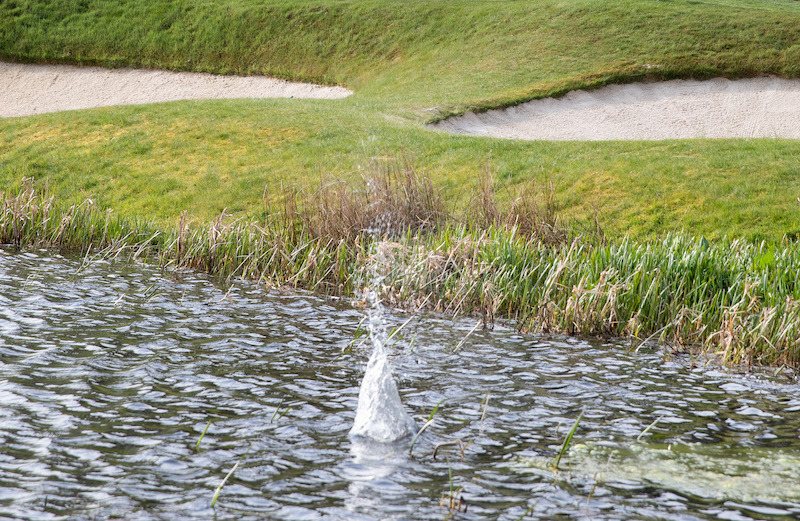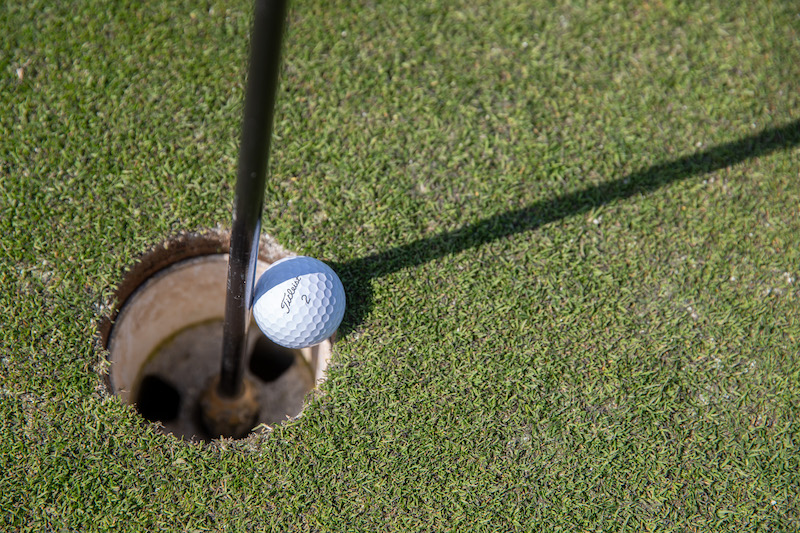7 Rules of Golf Definitions Every Golfer Needs To Know
In this Rules video and article, Jeremy Ellwood and Neil Tappin pick out 7 Rules of Golf Definitions that could help you better understand various Rules


In this Rules video and article, Jeremy Ellwood and Neil Tappin pick out 7 Rules of Golf Definitions that could help you better understand various Rules
7 Rules of Golf Definitions Every Golfer Needs To Know
Former European Tour chief referee, Andy McFee, once told us that the best piece of advice he was given when trying to get to grips with the Rules of Golf in his very earliest days was to focus on the Definitions first as they would then help to make better sense of the Rules themselves.
That advice holds true today and there are now 68 defined terms at the back of the Rules of Golf book. Every time a defined term is included in a Rule, it is shown in italics so you can quickly cross-reference it if need be.
All the Definitions are obviously important, but here we pick out 7 Rules of Golf Definitions every golfer needs to know…
Areas of the course
There are five defined areas of the course: 1) The general area, which covers the vast majority of the course including fairways, rough, woodland etc; 2) The teeing area of the hole you are playing; 3) The putting green of the hole you are playing; 4) All bunkers; and 5) All penalty areas.
Subscribe to the Golf Monthly newsletter to stay up to date with all the latest tour news, equipment news, reviews, head-to-heads and buyer’s guides from our team of experienced experts.

The different areas are important because certain Rules and procedures can vary from one area to another.
A good example would be the accidental movement of your ball at rest. In the general area you incur a one-shot penalty and must replace the ball before playing (other than if you move your ball while searching for it). On the putting green there is no penalty but you must still replace it.
Known or virtually certain
The phrase ‘known or virtually certain’ crops up a number of times in the Rules whether to do with determining if your ball is in a penalty area, whether it moved or what caused it to move.
‘Known’ is fairly straightforward - there is conclusive evidence that your ball did go into a penalty area, for example, perhaps because you saw a splash, or another player saw it go in and tells you.

‘Virtually certain’ is when all available information points to it being in the penalty area. However, there is a small degree of doubt perhaps because of a patch of rough where the ball could also conceivably be. This Definition says it must be at least 95% likely that it did go in.
There is obviously a judgment call to be made here. If there is thick rough before the penalty area where the ball could also be, you can't just assume what happened to it if no-one saw for sure where it finished.
Club-Length
This has become a defined term from the 2019 Rules revisions. Primarily, it prevents those with very long putters potentially gaining a small advantage when measuring relief areas.
Club-length now means the longest club you are carrying for that round other than your putter, so typically your driver.

However, if you have chosen not to carry a driver, it does mean you could potentially be giving up a few inches of relief, as you would then have to use your 3-wood or whatever your next longest club was – worth bearing in mind.
Temporary water
This is the new name for casual water. It basically refers to any accumulation of water on the surface, whether puddles or irrigation overflows, that is not in a penalty area.
You are entitled to free relief from temporary water if it interferes with your stance or the lie of the ball. However, you may not press down excessively with your feet or foot, something that plenty of golfers try to do when seeking relief!

But wet, soft or muddy ground is not enough, nor is the momentary appearance of water when you step on the ground. To be classed as temporary water, the accumulation must remain visible either before or after your stance is taken.
Stroke and distance
This is a ‘does what it says on the tin’ procedure and penalty. It applies when taking relief under Rules 17, 18 or 19 by playing another ball from where the previous stroke was made because it is lost, out of bounds, unplayable or in a penalty area.
It is your only option in the first two instances, and one of your options for an unplayable ball or from penalty areas.

‘Stroke and distance’ simply means you are penalised one stroke, but also lose all the distance you gained with the original shot. So, if you lost your ball on your second shot, you would replay from the same spot and then be playing your fourth shot.
Holed
When is a ball holed? Well, the answer in the Definitions is when your ball is at rest in the hole and all of it is below the surface of the putting green.
However, since 2019 there has been a special case added to the Definition, which is actually not so special a case and now very common as we are allowed to putt with the flagstick in.
This ‘special case’ states that when the ball is resting against the flagstick, it is considered holed when any part of it is below the surface of the putting green rather than all of it.

Point of maximum available relief
Normally when taking relief from an abnormal course condition (ACC) or obstruction, you are obliged to take complete relief such that the ACC or obstruction no longer interferes with your stance, the lie of the ball or your area of intended swing.
However, the ‘point of maximum available relief’ applies when taking relief from an abnormal course condition (typically temporary water) in a bunker or on the putting green only.

In these parts of the course, you can take relief at the point where the condition least interferes if there is no point of complete relief – for example, you could still stand in water in a bunker to play a ball that you have been able to drop in the sand clear of the temporary water.
We hope your have found our '7 Rules of Golf Definitions every golfer should know' feature useful.

Jeremy Ellwood has worked in the golf industry since 1993 and for Golf Monthly since 2002 when he started out as equipment editor. He is now a freelance journalist writing mainly for Golf Monthly. He is an expert on the Rules of Golf having qualified through an R&A course to become a golf referee. He is a senior panelist for Golf Monthly's Top 100 UK & Ireland Course Rankings and has played all of the Top 100 plus 91 of the Next 100, making him well-qualified when it comes to assessing and comparing our premier golf courses. He has now played 1,000 golf courses worldwide in 35 countries, from the humblest of nine-holers in the Scottish Highlands to the very grandest of international golf resorts. He reached the 1,000 mark on his 60th birthday in October 2023 on Vale do Lobo's Ocean course. Put him on a links course anywhere and he will be blissfully content.
Jezz can be contacted via Twitter - @JezzEllwoodGolf
Jeremy is currently playing...
Driver: Ping G425 LST 10.5˚ (draw setting), Mitsubishi Tensei AV Orange 55 S shaft
3 wood: Srixon ZX, EvenFlow Riptide 6.0 S 50g shaft
Hybrid: Ping G425 17˚, Mitsubishi Tensei CK Pro Orange 80 S shaft
Irons 3- to 8-iron: Ping i525, True Temper Dynamic Gold 105 R300 shafts
Irons 9-iron and PW: Honma TWorld TW747Vx, Nippon NS Pro regular shaft
Wedges: Ping Glide 4.0 50˚ and 54˚, 12˚ bounce, True Temper Dynamic Gold 105 R300 shafts
Putter: Kramski HPP 325
Ball: Any premium ball I can find in a charity shop or similar (or out on the course!)